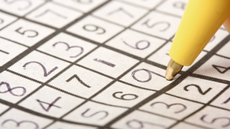How Russian is Ukraine?
Moscow politicians continue to frame Ukraine as Russian for their own benefits
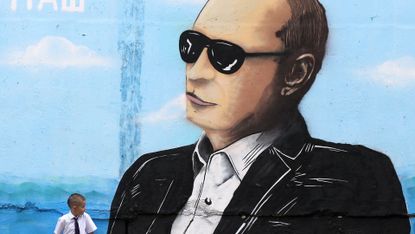
Olivia Durand, a postdoctoral associate in history at the University of Oxford, explores Vladimir Putin’s claims that Russians and Ukrainians are “one people”.
A political pamphlet published in 1762 described a conversation between “Great Russia” and “Little Russia”. In the exchange, the latter refused to be simply reduced to part of Great Russia and put forward its own unique history and identity. At the time, the name “Ukraine” did not yet designate a state. But the noun ukraina – a word that meant “borderland” in several Slavic languages – was already used to describe its future territory: the vast steppe region surrounding the Dnipro (Dnieper) River and bordering the Black Sea.
The term Little Russia was gradually abandoned in the age of nationalism, as 19th-century Ukrainian-speaking academics and thinkers decided to subvert the old derogatory term to devise the modern idea of Ukraine as a nation. But two centuries later under the leadership of Vladimir Putin, Russia is exploiting these historical discourses to justify its own encroachments into independent Ukraine. He made his sentiments clear in an article from July 2021 published on his presidential web page when he wrote of Russians and Ukrainians as “one people – a single whole”.
Subscribe to The Week
Escape your echo chamber. Get the facts behind the news, plus analysis from multiple perspectives.

Sign up for The Week's Free Newsletters
From our morning news briefing to a weekly Good News Newsletter, get the best of The Week delivered directly to your inbox.
From our morning news briefing to a weekly Good News Newsletter, get the best of The Week delivered directly to your inbox.
The capital of Ukraine, Kyiv (or Kiev), has been repeatedly described as the “mother of Russian cities”. Kyiv was at the centre of the Kyivan Rus’ (882-1240), an Orthodox medieval state to which Russian leaders – from the tsars to Putin – trace the origins of their country (an ancestry also asserted by Belarus and Ukraine). The claim is often used to support Russia’s claims over Ukrainian territories.
But this is a misconception. While the predecessor of the Russian empire, Muscovy, rose in the aftermath of the Mongol invasion (1237-40) that marked the end of the Rus’, the rulers of Moscow only took control of Kyiv 500 years later. Claiming Kyivan origins was rather a convenient method to negate the Mongol and Tatar element shaping Muscovy’s early development and instead give Russia an Orthodox past, with tsars apparently appointed by God.
Russia’s territorial sway over the remains of the Rus’ was limited by the Polish-Lithuanian Commonwealth (1569-1795), a bi-federation of the two powerhouses of central Europe. Most of the region known as Ukraine remained outside Russian authority until the final partition of Poland in 1795.
Whose influence?
Ukraine is one of the largest states in Europe and its geography was influenced by many more realms than just Russia. Since Ukraine originally meant “borderland”, the territory was a target for several kingdoms – not just Russia, but also the Khanate of Crimea, the Kingdom of Poland, and the Habsburg and Ottoman empires.
Sign up for Today's Best Articles in your inbox
A free daily email with the biggest news stories of the day – and the best features from TheWeek.com
The Polish-Lithuanian nexus was key to understanding this geography – before 1648, almost all Ukrainians lived under the rule of Warsaw. The southern steppes area of Ukraine had a sparse population, while in the west Hungary had ruled Transcarpathia since the Middle Ages, and main cities such as L’viv or Ternopil were successively Polish or Austrian. These cities briefly became the centres of the West Ukrainian People’s Republic between 1917 and 1921, before their integration into the USSR.
Since 2014, the Donbas region in the east and the Black Sea coast have been at the centre of the conflict between Ukraine and Russia. This land was known as “New Russia” (Novorossiya) by Catherine II “the Great” after her armies conquered them in the 1770s. But only a few Russians moved to the south Ukrainian “wild field” (dikoe pole), prompting the recruitment of foreign settlers from elsewhere in Europe.
So “New Russia” was never really very Russian. Historically, its territory was settled by Mennonites and Catholic Germans, French and Italian traders as well as large numbers of Greeks, Jews (from Poland and west Ukraine), Bulgarians, Serbs, and of course Ukrainians.
When Vladimir Putin refers to this large region as “New Russia”, he mostly reveals an inadequate understanding of Ukraine’s multi-ethnic past. Trying to understand Ukraine solely through the Russian prism is limiting: Ukrainian identity is a synthesis of its multicultural population which is connected not solely to Russia, but also, substantially, to central European states and the Black Sea region.
Cultural hegemony in Ukraine
The rise of the Ukrainian nationalist movement in the 19th century was seen by the Russian authorities as a sign of corrupting foreign influences – even perhaps the result of a western plot. Ukrainian identity was characterised as subordinate to a mostly urban high Russian culture, the Ukrainian language being associated with the countryside.
The Russian language remained a tool of social mobility – vital for anyone wanting to enter the administration of the Russian empire and improve their socioeconomic status. Still today in Ukraine, Russian remains a convenient language for employment, used by many businesses and tech industries.
Ukrainian was spoken long before Taras Shevchenko’s first publications in Ukrainian in the 1830s, but its alphabet was not standardised until the end of the 19th century. Initially, Ukrainian was encouraged by the tsarist authorities as a counterpoint to Polish influence. But as clandestine Ukrainian societies (Hromady) developed to pursue research into folk culture, in 1876 the tsarist government outlawed all publications and performances in Ukrainian.
After 1917, Ukraine experienced a short-lived cultural spring due to policies of indigenisation (korenizatsiia) under the Bolsheviks. They initially encouraged national languages to undermine Russian cultural domination, with 89% of newspapers printed in Ukrainian by 1931, and 97% of primary-school pupils learning the language. But Stalin reversed these policies in 1932.
The Holodomor famine, which killed about 3.5 million in Ukraine alone in 1932-33, destroyed the very population that could preserve the social and cultural markers of a national identity. This disaster shifted the country’s demographic balance, with the loss of one third of Ukraine’s population.
The swift succession of occupations and battles during the Second World War also marked the loss of Ukraine’s rich multi-ethnic past, with the execution and deportation of its Jewish population, and the near eradication of the remaining Crimean Tatar population.
By 1946, only 25 million inhabitants were left in Ukraine, which opened the country to rising migration from other parts of the Soviet Union – especially from Russia. The destruction of pre-war Ukrainian society and its replacement by supporters of a Greater Russian ideology was bolstered by the 1958 language and education reform, which aimed to make Russian the second native language of all non-Russians.
By the time of Ukraine’s independence in 1991, one third of the population was made of these Russophone migrants and their descendants, especially in the industrial east and Crimea. To this day, Ukraine is home to the largest population of Russian speakers outside Russia.
In 1991, 90% of the population voted in favour of an autonomous Ukraine. Now, 30 years later, Ukraine sees itself as a postcolonial and multinational state – neither “Russian” nor “Little”. While Russian politicians continue to frame Ukraine as Russian for their own benefits, this view ignores how Ukraine has persevered in the face of forced assimilation, cultural differentiation, imperial belligerence and colonial exploitation, to become its own country.
Olivia Durand, Postdoctoral associate in history, University of Oxford
This article is republished from The Conversation under a Creative Commons license. Read the original article.
Create an account with the same email registered to your subscription to unlock access.
-
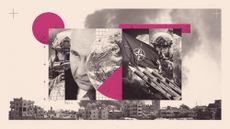 How would we know if World War Three had started?
How would we know if World War Three had started?Today's Big Question With conflicts in Ukraine, Middle East, Africa and Asia-Pacific, the 'spark' that could ignite all-out war 'already exists'
By Harriet Marsden, The Week UK Published
-
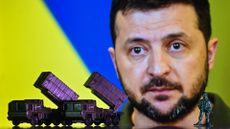 Will Iran attack hinder support for Ukraine?
Will Iran attack hinder support for Ukraine?Today's Big Question Pro-Kyiv allies cry 'hypocrisy' and 'double standards' even as the US readies new support package
By Elliott Goat, The Week UK Published
-
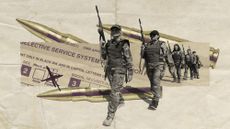 The issue of women and conscription
The issue of women and conscriptionUnder the radar Ukraine military adviser hints at widening draft to women, as other countries weigh defence options amid global insecurity
By Harriet Marsden, The Week UK Published
-
 Why is Ukraine backing far-right militias in Russia?
Why is Ukraine backing far-right militias in Russia?Today's Big Question The role of the fighters is a 'double-edged sword' for Kyiv, say commentators
By The Week UK Published
-
 Why is Islamic State targeting Russia?
Why is Islamic State targeting Russia?Today's Big Question Islamist terror group's attack on 'soft target' in Moscow was driven in part by 'opportunity and personnel'
By Elliott Goat, The Week UK Published
-
 Ukraine's unconventional approach to reconstruction
Ukraine's unconventional approach to reconstructionUnder the radar Digitally savvy nation uses popular app to file compensation claims, access funds and rebuild destroyed homes
By Harriet Marsden, The Week UK Published
-
 What does victory now look like for Ukraine?
What does victory now look like for Ukraine?Today's Big Question Not losing is as important as winning as the tide turns in Russia's favour again
By Elliott Goat, The Week UK Published
-
 Where has the Wagner Group gone?
Where has the Wagner Group gone?Today's Big Question Kremlin takes control of Russian mercenaries after aborted mutiny and death of leadership
By Elliott Goat, The Week UK Published

